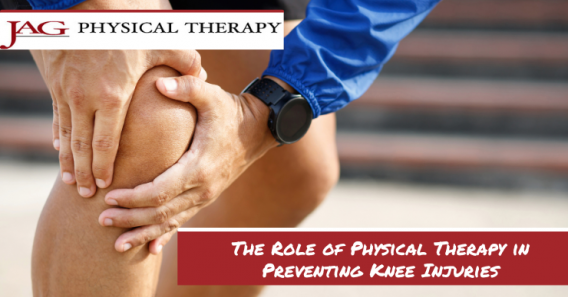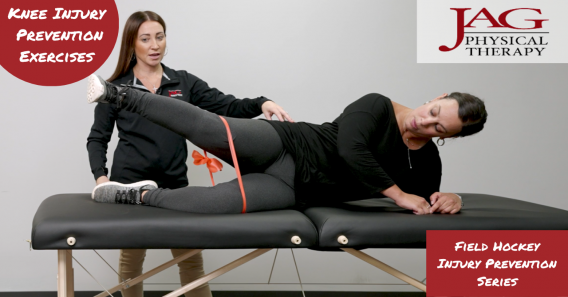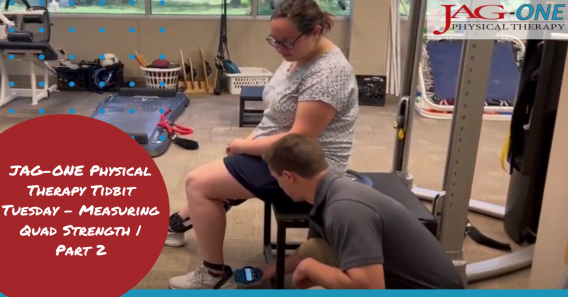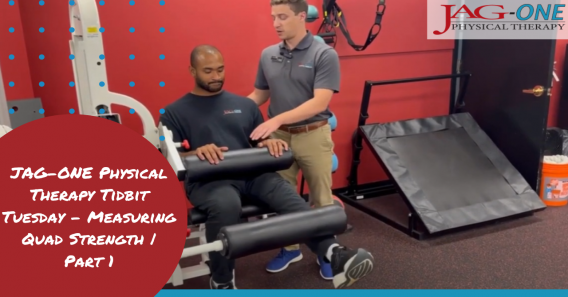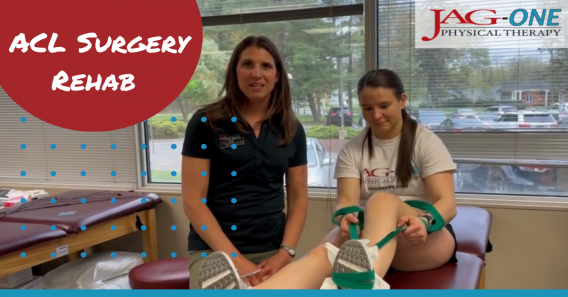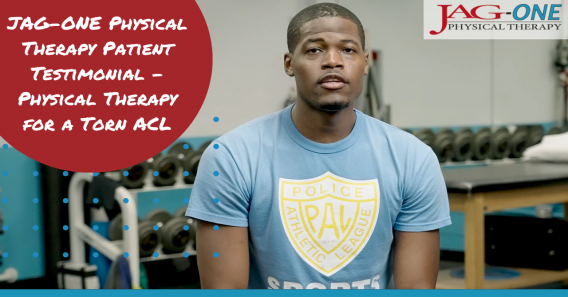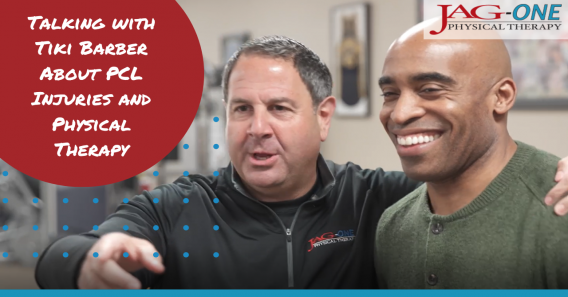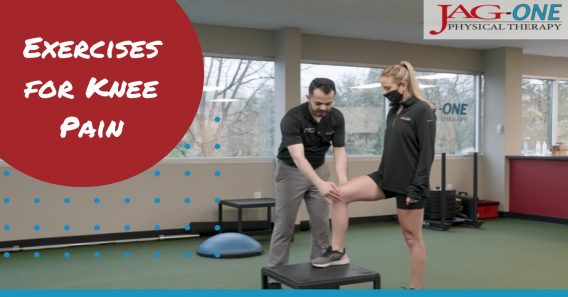The quadriceps muscles not only make up most of the thigh, but also have the all-important function of being the extensor of the knee joint. This means that without healthy quads, it’s impossible to have healthy knees. If you’ve had a knee injury, even if the quadriceps area wasn’t directly involved, your rehabilitation should still include working on your quads. Doing so will not only help with a faster recovery, but also ensure better knee function and lower the likelihood of future injuries.
A single piece of equipment – a Theraband – is all that is needed for one of the absolute best exercises for knee stability. This type of resistance band can be used for a terminal knee extension (TKE) routine that will have great results whether you’re rehabilitating the joint or simply trying to strengthen your quadriceps. However, the best way to undertake a recovery exercise program, especially one using specialized equipment, is by consulting a physical therapist first. JAG Physical Therapy is New Jersey, New York, and Pennsylvania’s most trusted name in musculoskeletal rehabilitation – our experience with conditions of the knee joint means we will always develop the best custom knee treatment plan for you. Schedule an appointment with us to get started or see the details on Theraband TKE below.
What Are the Benefits of Theraband Terminal Knee Extensions?
Among the benefits of using a Theraband for knee exercise, perhaps the most important is gradual progression of intensity. Resistance bands are designed to exert more force on your muscles the harder you push against them. This is important in the rehabilitation process because you should be building strength and mobility over time until you get back to normal function. The Theraband in particular can be set up in multiple ways thanks to its consecutive loop design, which means exercises can be modified according to the level of your recovery. Even if your exercise goal is injury prevention, it’s helpful to work out more intensely over time so that your joints will be protected under higher and higher levels of strain.
Terminal knee extensions are a movement that everyone can do to a lesser or greater degree, no matter what point of the rehabilitation timeline they are on. However, this movement is still highly effective at working the quadriceps muscles. The resulting greater knee stability is crucial in rehabilitating from conditions such as an ACL tear, patellar tendinitis, osteoarthritis, and various others.
How to Perform Theraband Terminal Knee Extensions Correctly
The basic steps of Theraband terminal knee extensions will probably seem familiar – partly because they are similar to other forms of knee rehabilitation with resistance bands. This familiarity and simplicity makes TKEs easier to keep up with and consistently perform over time. The key is to move smoothly, pay attention to your leg positioning, and don’t overextend to the point of pain.
To start, secure one end of the Theraband around a stable object, such as a heavy piece of furniture or a door. Loop the other end around the back of your thigh just above the knee. Move into a position where the band is parallel to your body and taut and stand with your knee slightly bent, then extend your knee fully so that your leg is straight and the sole of your foot is on the ground. The closer you get to straightening your leg, the more resistance you’ll feel. Slowly bend your knee again until you assume the starting position, then repeat. A physical therapist will recommend a number of repetitions that’s appropriate to your physical condition.
You should avoid bending your knee too much in the starting position, and when you straighten your leg, you should pay attention to engaging your quadriceps without hyperextending. Don’t overdo the level of resistance, either – as your quads get stronger, you can add more over time. Being mindful of these points will give you the best results without risking soreness or pain from the exercise.
Who Can Benefit from Theraband Terminal Knee Extensions?
Anyone who wants or needs stronger quadriceps muscles may find Theraband TKEs an ideal form of exercise. For example, athletes who are especially concerned about knee injuries, such as skiers or football running backs, can use TKEs to build joint stability and resilience.
Patients who have had surgery to repair a knee ligament or meniscus will also often be instructed to use terminal knee extensions in the rehabilitation process. People who have chronic conditions like arthritis in the knee or patellar instability also stand to benefit highly, as does anyone who has weakness or pain of the knee joint from being sedentary.
How Can Physical Therapy Help Improve Knee Strength and Stability?
Your physical therapist’s role in your knee joint rehabilitation or strengthening is all-encompassing. To begin with, their assessment of your knee function will guide their recommendations for your TKE and other exercises. As you heal, your exercise regimen will need to change – which may include varying your TKE routine. Different physical therapy techniques – manual therapy, bracing, aquatic therapy, and others – will also improve your knee condition. JAG Physical Therapy’s multispecialty clinic locations are well-suited to deliver effective care that focuses on your specific knee condition and any weaknesses you may have in this complex joint.
Strengthen Your Knees with Expert Physical Therapy at JAG
Recovering after a knee injury can be tough, but with the help of an empathetic physical therapy professional, you can rehabilitate easier and regain more function faster. The team at JAG PT is passionate about helping people move better and recover from joint damage, and we’re just as committed to injury prevention as we are to treatment. Book your appointment now for a tailored knee rehabilitation plan and get started on the road to full recovery.




